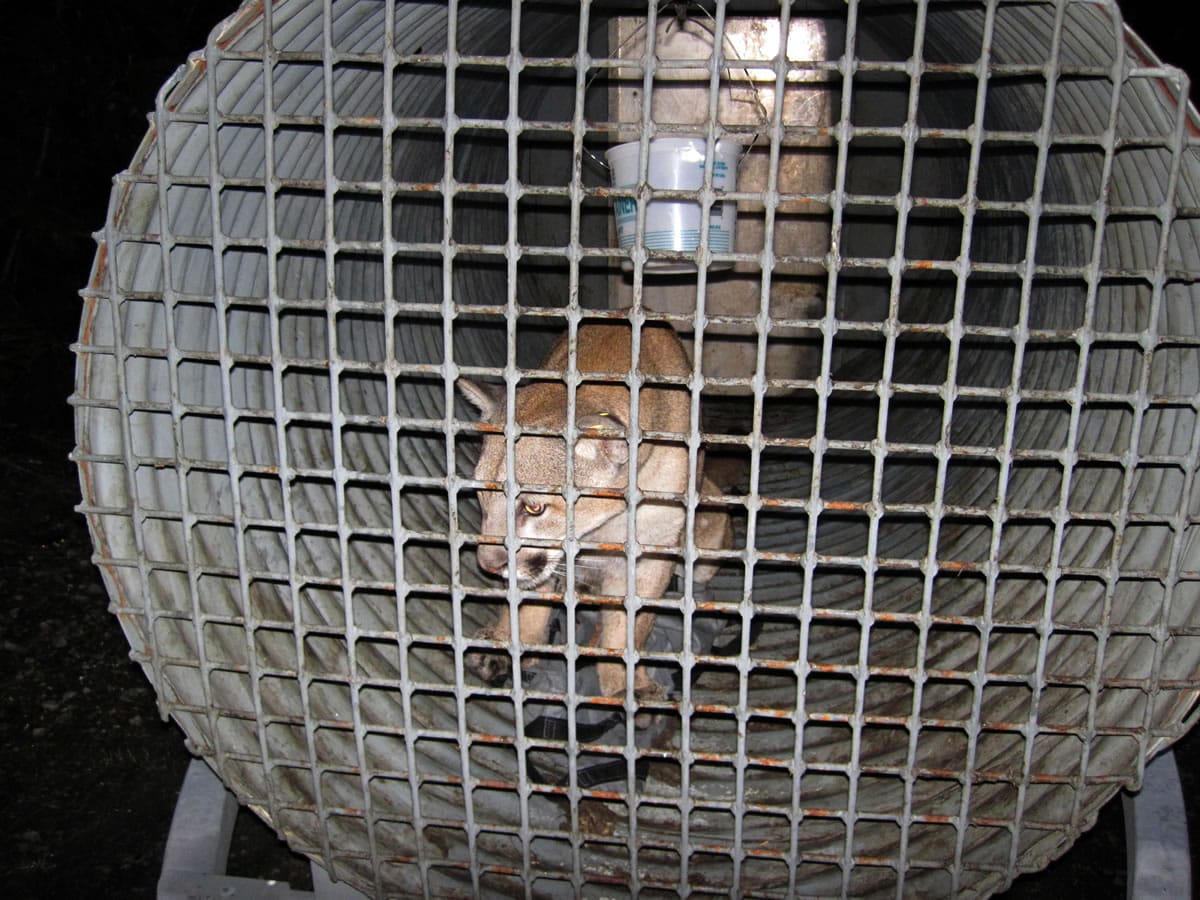Cougar and Salmon creeks meander through the lush parkland shared by the Felida and North Salmon Creek neighborhoods, and so do the cougars, some residents say.
Talk about recent cougar sightings has stimulated adrenaline among some pedestrians on the tranquil Salmon Creek Greenway, a 3-mile trail stretching from Salmon Creek Regional Park to Felida Bridge at Northwest 36th Avenue.
“There are kids who ride their bikes through here,” said Rob Aldridge, an outdoorsman who frequents the greenway. “It kind of makes me nervous.”
In mid-October, a woman found decomposed pieces of a black Labrador dog in brush near a perimeter road west of the Salmon Creek Association Complex, said Bill Bjerke, operations superintendent of Clark County Public Works.
Later, as she was walking on the greenway trail, she reportedly saw a cougar standing in a meadow in the park about 1,000 feet away from the trail, Aldridge said.
In the same wooded area where the dog remains were, there are possible signs of cougars’ using trees as giant scratching posts. Some of the tree trunks have splintered surfaces, which may come from deer antlers, but other marks are longer and more defined, suggesting the work of large cat claws, Aldridge said.
“In places like that, it wouldn’t be an uncommon thing,” said Eric Holman, a Vancouver-based wildlife biologist with the Washington Department of Fish & Wildlife. “Cougars do a pretty good job of making a living in open spaces between homes and other civilization.”
About 3,000 cougars live in the state, he said.
Gary Elgin, a licensed commercial trapper who frequently works along Salmon Creek, said cougars could easily migrate into the greenway area from the east or west.
“You’ve got all the right conditions for cougars,” Elgin said. “There’s plenty of cover, plenty of deer and plenty of house cats they can eat without any trouble.”
Five cougar incidents in Clark County have been reported to the Department of Fish & Wildlife in 2013. Three were in the Vancouver area and two were in Camas. The most recent report, on June 4, was in the North Salmon Creek neighborhood on Northeast 128th Circle. A woman reported that a cougar had been stalking her horse for weeks. Fish & Wildlife employees gave her advice on how to handle future cougar sightings, according to the agency’s website.
Many cougar sightings may never be reported, Holman said.
“If someone is seeing one that’s just doing its thing, it’s not necessarily something we would do anything about,” he said.
However, if the cougar is on someone’s porch, “in that case, someone should call 911.”
Cougars prefer to conceal themselves in brush or forested areas. They usually ambush their prey from behind or above.
The best way to respond when faced with a cougar is to maintain eye contact, Holman said.
“Stand up and look big,” he said. Pick up any small children and rein in any pet dogs close to your body.
“Cougars live their life hiding and sneaking,” he said. “They only want to attack something that’s a clear shot and is going to be a favorable outcome for them. If you see one face-to-face, yell, throw rocks at it, be imposing and assertive about it and then back away slowly and let them have their space.”



